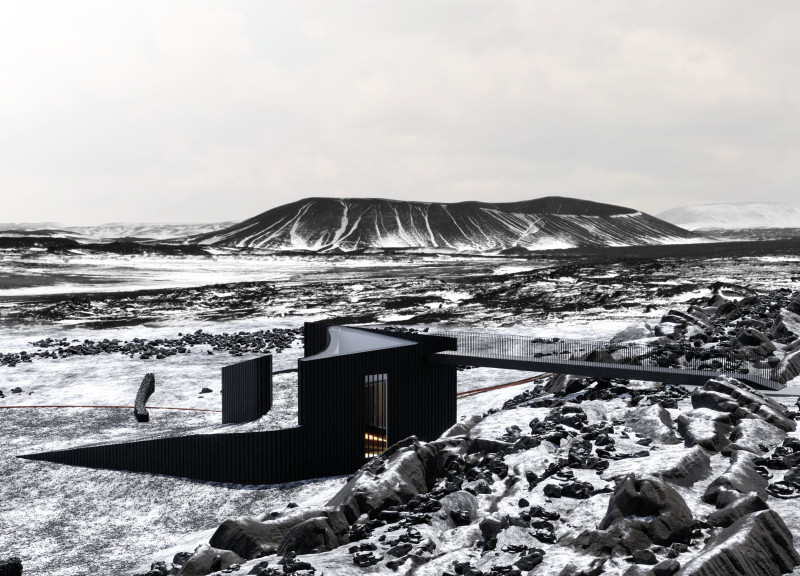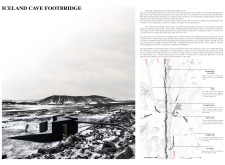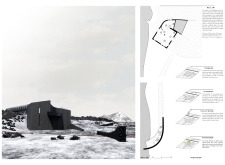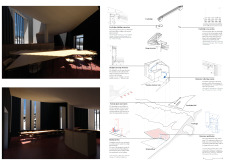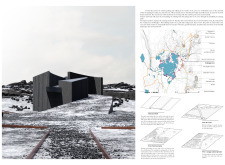5 key facts about this project
The Iceland Cave Footbridge is an architectural project located near Lake Myvatn, Iceland. This structure aims to enhance visitor experience while preserving the natural environment of the area. The bridge serves as both a pathway and a viewing platform, allowing individuals to explore the unique geological features enhanced by the landscape's rich history. Its design reflects a commitment to sustainability and ecological awareness, positioning it as an integral part of the surrounding environment.
Unique Contextual Integration
The architecture of the Iceland Cave Footbridge embodies the geological context of the region, characterized by volcanic formations and geothermal activity. The design employs materials such as Cor-ten steel, which weathers gracefully, blending with the rugged terrain. The footbridge features an elegant arching form that harmonizes with the contours of the land while providing visitors unobstructed views of the surrounding landscape. This bridging of natural form and structural design enhances its visual appeal and functionality.
A vital aspect of the project is the visitor center, which is designed to educate guests on the geological history and environmental significance of the area. This center promotes interactions with local culture and crafts, fostering a community-oriented approach. Additionally, the incorporation of paths and trails guides visitors through sensitive ecological zones, ensuring minimal disturbance to the ecosystem.
Sustainable Design Practices
Sustainability is a key focus of the Iceland Cave Footbridge project. Each material is selected for its ecological impact, with emphasis on locally sourced and environmentally friendly options. Reinforced concrete provides stability, while the use of sustainable wood reinforces the commitment to responsible architecture. The design also incorporates systems for rainwater collection and efficient drainage to mitigate environmental impact.
The footbridge stands out not just as a transit route but as an immersive educational platform that allows visitors to connect with the natural world. Its design reflects a thoughtful approach to architecture, aiming for long-term responsibility toward the environment while delivering a functional experience.
For more in-depth insights on the architectural plans, sections, designs, and ideas that define this project, interested readers are encouraged to explore the project presentation for further details.


